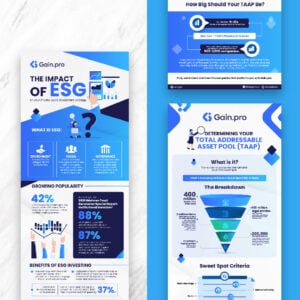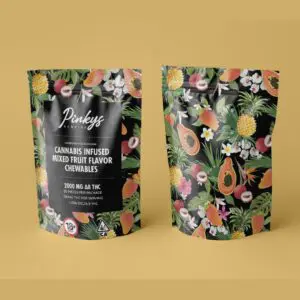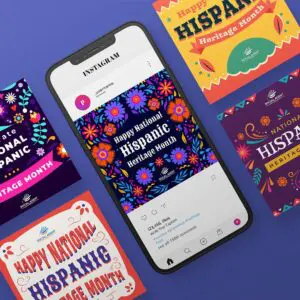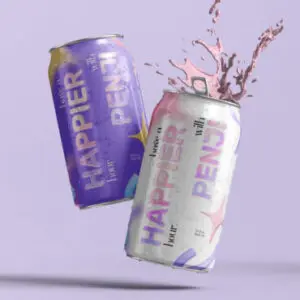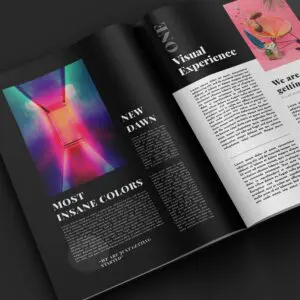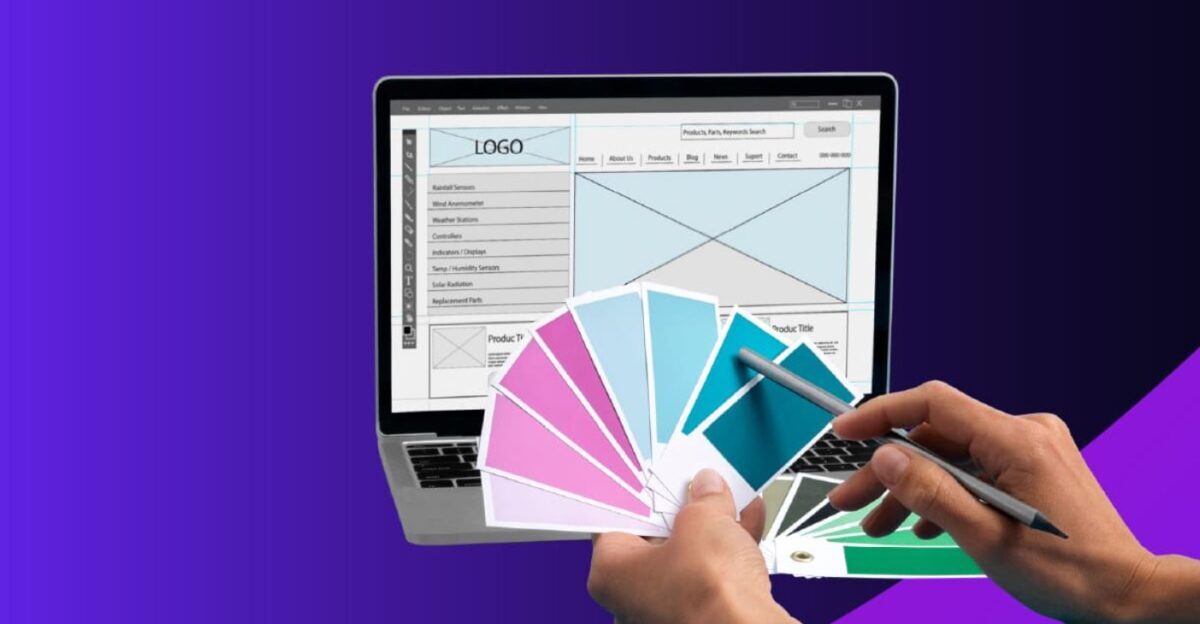
People have different interpretations of the meaning of brand colors. Imagine walking past a store – is the vibrant red screaming “passion” or urgency? Does the calming blue evoke trust or dullness? The truth is that color in branding goes far beyond aesthetics. Here’s everything you need to know when choosing colors for your brand matters.
Why Branding Colors Matter
Emotions are powerful and can influence our decision-making. As a business owner, you want to establish a solid emotional connection with your customers. The challenge is you cannot tell your company’s entire story in a logo or storefront signage. Fortunately, branding colors provide a simple solution to attract your customers’s attention.
In his book Color Psychology and Color Theory, Faber Birren, a famous color theorist, explained the link between colors and our emotions. Just like words like “love” and “make everyday adventures brighter” evoke different emotions, the colors red and blue also create different human responses.
Branding colors has many benefits, including:
- Emotional appeal: Colors can evoke different emotions in people. You can create a visual identity that appeals to your target audience’s emotions by choosing the right colors.
- Brand personality: Colors can help to communicate your brand’s personality. A brand that uses bright and vibrant colors might be seen as fun and exciting, while a brand that uses more muted colors might be seen as sophisticated and elegant.
- Brand recognition: Brand colors can help people recognize and remember your brand. Creating the right color palette is essential for a new brand or entering a new market.
- Trust and credibility: Some, like blue and green, are often associated with confidence and credibility. This can be helpful if you are trying to establish yourself as a reliable and trustworthy brand.
Application of Psychology in Marketing and Branding
Color psychology has proven to be an effective marketing tool. It plays a major role in how customers make decisions and evaluate brands. Color often determines a consumer’s first impression of a brand or product. Consumers attach feelings about specific colors (for example, black as luxurious) to the product. In turn, those color associations influence their perception of your brand.
To help you with your business or organization, below are the most common areas in which you’ll be using your branding colors:
- Logo
- Storefront
- In-store design
- Website
- Advertisements
- Staff uniforms
How to Create a Brand Color Scheme
Picking the best brand color scheme can take time and effort. That’s why we created this guide. Follow this four-step process when creating your brand color scheme.
1. Plan on choosing three colors
Most brands use three primary colors:
- A base color: This is your main player, the color people will remember you by.
- An accent color: This adds a pop and highlights essential things.
- A neutral color: This is your chill buddy, calming things down and making everything look polished.
2. Choose your base
Your primary color should show off this key personality trait and grab your audience’s attention. Then, you can pick other colors that work well with it to complete your brand’s colorful look.
3. Choose your accent
The accent color is like your sidekick to your primary color. You’ll use it a lot, but picking it can be tricky. Here’s why:
- It has to match your brand’s personality, just like your primary color.
- It has to look good next to your primary color.
- You want your audience to be happy with the colors you choose.
So, take your time picking the accent color! It should complement your primary color and resonate with your audience.
4. Choosing your neutral
The neutral color is your chill friend in the background. This color won’t be the star of the show, but it’s important! It’s usually a shade of gray, white, beige, or maybe even off-white. Black can work, too, but be careful – it can steal the spotlight from your other colors!
The color wheel is one of your most reliable references when choosing branding colors. Take note of the locations of colors to one another on the wheel.
Monochromatic
Use just one color in different shades! This is called a “monochrome” scheme, making your main color extra powerful. While great for minimalist brands, the challenge here is to differentiate the hues and shades so your sight can be visually appealing.
Analogous
These are the colors located next to each other on the color wheel. They often go well together and evoke similar emotional connotations. Analogous colors are safe but not the best for drawing attention.
Complementary
Opposite colors often bring out the best when paired. Meanwhile, complementary color schemes are grand for dynamic, stimulating visuals. But, you must be careful when imitating another brand just because they are in demand.
Triadic
Triadic colors are stable like analogous schemes but provide a more stimulating combination similar to complementary themes. However, getting the three colors to relate to your brand identity is the trickiest part.
Your brand colors will repeatedly appear in many aspects of your business. You will use them everywhere – on your website, logo, ads, and social media. So, think of them like your outfit that you carefully pick because everyone will see it!
Common Mistakes in Choosing Brand Colors
Some common mistakes people make when choosing brand colors include:
Choosing too many colors: It’s better to select a few key colors that will be used throughout your branding. This will help to create a cohesive and consistent visual identity.
Using colors that are too similar: Using colors that are too similar can make your branding look more appealing and appealing. Using colors with a good contrast is essential to make your brand identity visually appealing and memorable.
Not updating their brand colors: As your brand evolves, you may need to update it. This is especially important if your target audience or brand’s personality changes.
Let Penji Execute Flawless Branding for You
Choosing the right colors for your brand sets the mood, evokes emotions, and leaves a lasting impression. But with so much on your plate, understanding the language of color psychology can feel overwhelming.
That’s where Penji comes in, your one-stop shop for leveraging the power of color in branding. Our team of talented designers is like a color wizard, using their expertise to craft a color palette that perfectly reflects your brand identity. Book a demo now to learn more about our unlimited graphic design services.
About the author

Rowena Zaballa
With a background as a former government employee specializing in urban planning, Rowena transitioned into the world of blogging and SEO content writing. As a passionate storyteller, she uses her expertise to craft engaging and informative content for various audiences.

